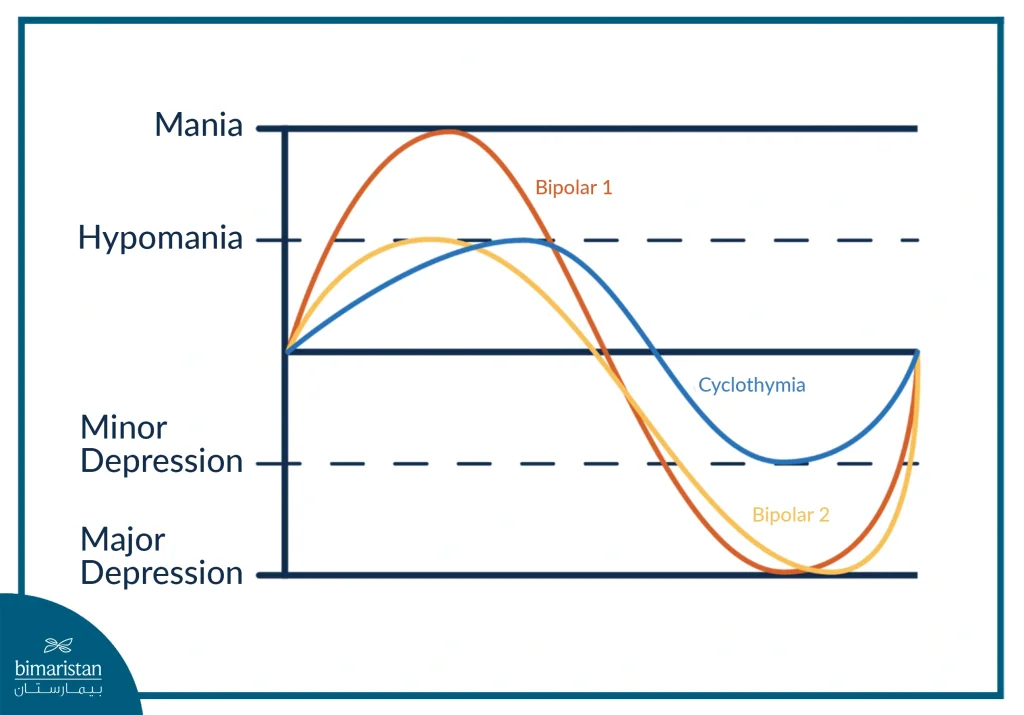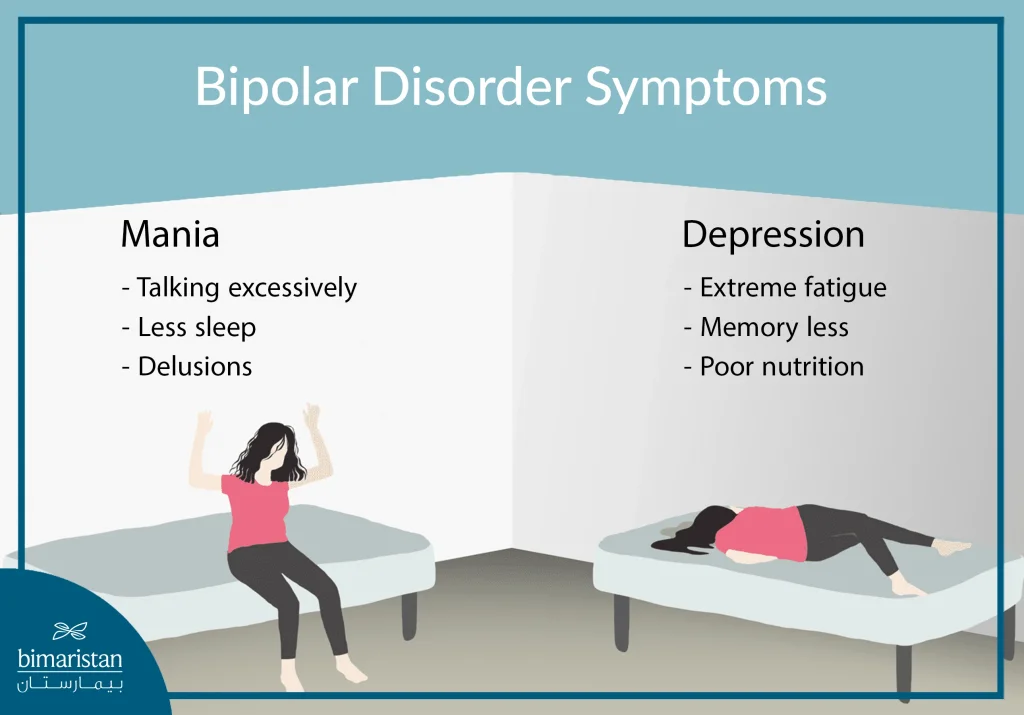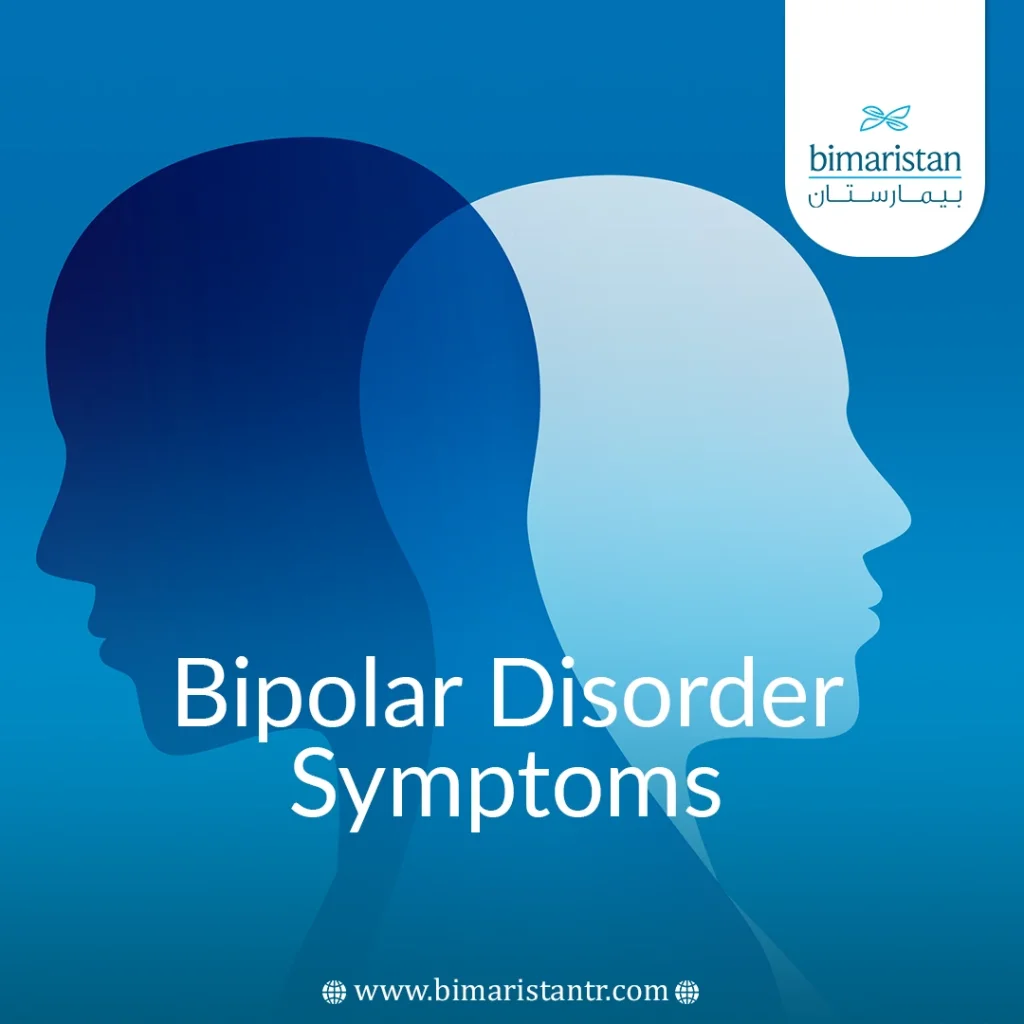Bipolar disorder symptoms have significant impacts on people’s lives, leading to disability and difficulties in multiple areas such as personal relationships, work, and school. It also increases the risk of suicide, anxiety, and substance use disorders. Many people with bipolar disorder have difficulty integrating into communities, hindering their access to healthcare.
Although treatment is available and includes medication and psychosocial therapy, treatment coverage remains low, especially in low- and middle-income countries. Around 40 million people globally live with bipolar disorder, making it a prominent mental health condition.
What is bipolar disease?
Bipolar disorder is a psychiatric condition characterized by extreme mood swings between manic or hypomanic episodes and depressive episodes. During depressive episodes, the person feels very sad and loses interest in life, while during manic episodes, they experience hyperactivity, exaggerated joy, or abnormal irritability. These mood swings may occur sporadically or frequently throughout the year, affecting sleep, energy, behavior, and decision-making. Although bipolar disorder symptoms can last a lifetime, they can be managed with medication and psychotherapy.
Types of Bipolar Mood Disorder
- Bipolar I mood disorder: Characterized by severe manic episodes that may require hospitalization and may be accompanied by periods of hypomania or depression.
- Bipolar II mood disorder: Characterized by severe depressive episodes and hypomanic episodes without reaching full-blown mania.
- Cyclothymia is characterized by mild to moderate mood swings lasting two or more years.
- Other types: Symptoms of bipolar disorder may occur as a result of certain medications or medical conditions such as stroke or MS.

Who is affected by bipolar disorder symptoms?
The average age of onset of bipolar disorder symptoms is 25, according to the National Institute of Mental Health. However, the illness can begin early childhood or as late as the 40s and 50s. Bipolar disorder affects an equal number of men and women and is found in all ages, ethnic groups, and social classes.
More than two-thirds of people with bipolar disorder have at least one relative with the illness or with unipolar major depression, suggesting that the disease has a genetic component.
Women and Bipolar Disorder
Studies show that women with bipolar disorder, especially type 2, are more likely to experience periods of rapid cycling than men with the same disorder. Depression, anxiety, and perceived stress are additional challenges for women with PCOS. Some research also suggests that women with bipolar disorder experience more depressive and mixed episodes than men with the disease, even though the incidence of bipolar disorder is equal between men and women.
Children, adolescents, and bipolar disorder
Children who have one parent with bipolar disorder are at a higher risk of developing the disorder, with a 15%-30% risk, while the risk increases to 50-75% if both parents have the disorder. Research suggests that the prevalence of bipolar disorder symptoms among adolescents may be similar to that of adults. A recent study by the National Institute of Mental Health in the United States found that 1% of adolescents between the ages of 14 and 18 meet the diagnostic criteria for bipolar disorder or cyclothymia.
About 20% of adolescents with major depression may develop bipolar disorder within five years of the onset of depression, and it is estimated that up to one-third of children and adolescents with depression may have early-onset bipolar disorder symptoms. The onset of manic episodes in children and adolescents differs from adults, as they are more likely to experience intense emotions and destructive behaviors rather than feelings of joy or euphoria. During depressive episodes, they may exhibit frequent physical complaints such as headaches, stomachaches, and fatigue, along with poor academic performance, irritability, social isolation, and hypersensitivity to rejection or failure.
Bipolar disorder symptoms
Bipolar disorder symptoms are characterized by severe mood swings that significantly affect the sufferer’s life, ranging from episodes of hyperactivity and high energy, known as mania or hypomania, to periods of deep depression that make even simple daily tasks difficult. The duration of these mood changes varies, lasting for short periods or weeks, and their severity varies from person to person.
Symptoms of mania and hypomania
Manic episodes are characterized by a dramatic rise in mood, an abnormal increase in activity and energy, and, in severe cases, a loss of contact with reality. Common symptoms of mania include:
- Feeling overconfident or having an exaggerated sense of self-worth
- Babble and move quickly from one idea to another
- Poor concentration and easily distracted
- Lack of need for sleep while feeling hyperactive
- Making impulsive decisions, such as irrational spending or risky behaviors
- Delusional beliefs, such as believing they are overly popular or feeling like others are watching them
Hypomania is a less severe form of mania, where the symptoms are similar but do not significantly affect an individual’s daily functioning, yet may progress to full-blown manic episodes or severe depression.
Symptoms of major depression
During an episode of depression, a person experiences feelings of deep sadness and a loss of interest in activities they previously enjoyed. Symptoms include:
- Feelings of sadness, hopelessness, or emptiness
- Loss of interest or enjoyment in daily activities
- Noticeable changes in weight and appetite
- Sleep disorders, both insomnia and oversleeping
- Feeling constantly tired or low on energy
- Difficulty concentrating and making decisions
- Excessive feelings of guilt or loss of self-esteem
- Thinking about or attempting death or suicide

Impact of symptoms on daily life
Bipolar disorder symptoms affect not only mood swings but also social relationships, work, and schooling. Sufferers may experience issues with job or academic performance, and severe episodes may cause the need for specialized medical care to prevent psychological or physical harm. In some cases, children and adolescents are more likely to exhibit different symptoms, such as extreme irritability, behavioral issues, or recurring physical complaints, such as headaches and stomachaches, making the diagnosis more complex.
Despite the challenges associated with the symptoms of bipolar disorder, early diagnosis and appropriate treatment, including medication and psychotherapy, can help individuals manage symptoms and live more stable lives.
Learn about: Bipolar disorder causes
Diagnosing Bipolar Disorder
Diagnosing bipolar disorder is a complex process that can take years due to the similarity of its symptoms to other psychiatric disorders, such as depression and schizophrenia, as well as the fact that symptoms vary from person to person. Studies show that patients can face up to ten years of dealing with symptoms before receiving an accurate diagnosis, with only one in four people receiving a correct diagnosis within the first three years of symptoms, and there is a gender bias in diagnosis, with women often being misdiagnosed with depression and men more likely to be misdiagnosed with schizophrenia.
Stages of diagnosis
Doctors rely on several steps to reach an accurate diagnosis of bipolar disorder, including:
- Physical examination and lab tests: These tests are performed to check for any health issues causing the symptoms.
- Mental health assessment: The psychiatrist will discuss the patient’s feelings and behaviors with them and review their family history to look for possible genetic factors. The patient may also be asked to contact family members or close friends for additional information about the symptoms.
- Mood mapping: You may be asked to record your daily mood, sleep patterns, and other behaviors. This can help doctors arrive at a more accurate diagnosis and treatment plan.
Diagnosing bipolar disorder in children and adolescents
The same diagnostic criteria are used for adults, but symptoms may present differently in children and adolescents, making diagnosis difficult. In some cases, children may be diagnosed with other conditions such as attention deficit hyperactivity disorder (ADHD) or behavioral disorders, delaying the recognition of bipolar disorder. It may be necessary to consult a psychiatrist who specializes in pediatric mood disorders to assess the condition accurately.
The importance of early diagnosis
Early and accurate diagnosis improves patients’ quality of life by providing appropriate treatment and minimizing periods of suffering without medical intervention. A comprehensive evaluation that combines a physical examination, psychological assessment, and mood mapping helps avoid misdiagnoses and develop treatment strategies that help patients stabilize their mood and improve their daily functioning.
Treating Bipolar Disorder
Despite the challenges associated with diagnosis, effective treatment can help patients better manage their symptoms. In the past, the expected success rates for treating acute manic episodes with lithium were 70%- 85%, but actual response rates have now dropped to 40%- 50%. However, joining a patient support group improved treatment adherence by 86% and reduced the length of hospitalization.
Treating bipolar disorder symptoms requires a combination of medication and psychosocial therapy to achieve the best results. Although medications are essential in treating acute episodes, psychosocial interventions play an important role in long-term symptom management and supporting recovery.
Medicines
Medications are an essential part of treating bipolar disorder, especially during acute episodes of mania and depression. Mood stabilizers such as lithium, valproate, and antipsychotics are effective in managing acute manic episodes. However, some medications need careful monitoring due to potential side effects. For example, lithium levels should be monitored clinically and laboratory, and valproate should be avoided during pregnancy or lactation.
Antidepressants should not be used during manic episodes but may be combined with mood stabilizers or antipsychotics during depressive episodes. Some medications may cause side effects such as drowsiness, muscle spasms, tremors, and weight gain, which may affect patients’ adherence to treatment. These effects should be monitored and managed effectively.
People with silent (asymptomatic) bipolar disorder may need to continue taking medications such as mood stabilizers or antipsychotics for at least six months, while those with multiple episodes may require long-term treatment to minimize relapses.
In addition to medications, psychological interventions can help improve the quality of life for people with bipolar disorder. These interventions include cognitive behavioral therapy, interpersonal therapy, support groups, and psychoeducation, which can reduce depressive symptoms and reduce the likelihood of relapse. Family psychoeducation can also be helpful, helping families understand the disorder and better support family members.
It is also essential for people with bipolar disorder to have social support from family and friends. Support groups are an indispensable source of encouragement, learning coping skills, and an opportunity for individuals to share experiences.
Lifestyle changes
Lifestyle changes such as regular sleep, physical activity, a healthy diet, and minimizing stress triggers can greatly improve mood daily, which can help doctors identify changes in mental state and take appropriate action.
Early diagnosis and ongoing treatment
Although recovery from bipolar disorder can be difficult at times, it is possible with the right care. Individuals with bipolar disorder can learn to manage their symptoms and live a meaningful and productive life, especially when treatment is comprehensive and combines medication with psychiatric and psychosocial therapy.
Despite the challenges faced by people with bipolar disorder, early treatment and ongoing support can help individuals manage their symptoms and live a stable and productive life. There must be increased awareness about the disorder, as well as the social and family support necessary to ensure that people with bipolar disorder can better manage their symptoms and achieve a balanced life.
Sources:
